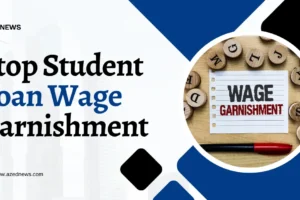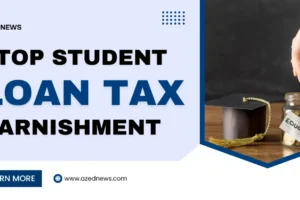If you are looking for Biden’s student loan forgiveness application, then you are on the right place. On December 6, the Biden administration approved $4.8 billion in student loan forgiveness for 80,300 student borrowers. If you want relief from your student loan burden, explore the opportunities available under Biden’s student loan forgiveness program. You will find all the information about Biden’s Student Loan Forgiveness application in this article.
Table of Contents
Numerous students have already benefited from the Biden administration’s major federal student loan forgiveness effort. On December 6, the Biden administration announced a major step toward reducing student loan debt by forgiving an additional $4.8 billion in outstanding debt for 80,300 borrowers.
This relief is a direct result of intentional changes made by the US Department of Education to its income-driven repayment programs and the Public Service Loan Forgiveness Program. Learn detailed information about Biden’s student loan forgiveness application process and updates.
Biden Student Loan Forgiveness
Biden’s student loan forgiveness application targets working and middle-class federal student loan recipients, proposing forgiveness of up to $20,000. Unfortunately, the Supreme Court invalidated the student loan forgiveness program in July. With the program’s cancellation, the hopes of countless borrowers seeking relief have been dashed, leaving them in dire straits.
The sudden end of Biden’s Student Loan Forgiveness application opportunity has left many questioning the future of student loan forgiveness and the government’s commitment to addressing the challenges facing borrowers. However, the Biden administration recently extended $9 billion in debt relief for an additional 125,000 citizens through loan cancellation for borrowers experiencing total and permanent disability, as well as improvements to IDR and Public Service Loan Forgiveness.
On December 6, the Biden-Harris administration unveiled a plan to forgive an additional $4.8 billion to assist 80,300 student borrowers. This initiative seeks to reduce the financial stress of student loans, reflecting the administration’s commitment to reducing the burden on borrowers.
Learn more about Biden’s Student Loan Forgiveness Application and explore the best Requirements For Student Loan Forgiveness.
Biden Student Loan Forgiveness Application
A large number of student loan borrowers had hoped to complete Biden’s student loan forgiveness application to reduce their loan burden. However, the cancellation of this influential student loan forgiveness program has halted federal student aid progress in implementing the debt relief initiative.
When the Biden student loan forgiveness program was relaunched on December 6, officials not only outlined the eligibility criteria but also specified the application deadline as December 31, 2023.
Eligibility Criteria for Biden’s Student Loan Forgiveness Application
To be eligible for Biden’s student loan forgiveness application, you must meet the following requirements:
1. Income Requirement
To qualify for Biden’s student loan forgiveness application, individuals must have an annual income of less than $125,000, while married couples or heads of households must have a combined income of less than $250,000.
2. Pell Grant
If you qualify for a Pell Grant during college and meet specific income criteria, you may be eligible for significant debt relief, with a maximum of $20,000. The purpose of this relief is to reduce the financial burden for individuals who demonstrated financial need through Pell Grants during their higher education pursuits.
3. Not Receiving Pell Grant
If you did not receive a Pell Grant during college and you meet the income criteria, you are eligible for up to $10,000 in debt relief. This targeted financial aid is intended to reduce the burden of student debt, providing relief to those who may have missed federal grant aid during their educational pursuits.
Biden’s Student Loan Forgiveness Plan
Part 1: Final Extension of the Student Loan Repayment Freeze
The Biden-Harris administration has repeatedly extended the pause on student loan repayment in response to the economic challenges posed by the pandemic. As a result, individuals with federally held loans are not required to make any loan payments since President Biden took office.
The one-time student loan relief plan by the Biden administration aims to mitigate the financial impacts of the pandemic and facilitate a seamless transition for borrowers to resume repayments. It also aims to assist those at greatest risk of delinquency or default once payments begin.
A recent decision by Congress prohibits further extension of the payment freeze. From September 1, 2023, interest on student loans has resumed, with payments starting in October.
Part 2: Giving Low- and Middle-income Families Targeted Debt Relief
To facilitate a seamless return to repayment and to assist borrowers who face the highest risk of delinquency or default when payments resume, the US Department of Education is prepared to offer a maximum of $20,000 in loan relief to those individuals, who have received Pell Grants and hold loans managed by the Department.
Additionally, non-Pell Grant recipients may qualify for up to $10,000 in debt relief. Eligibility criteria include personal income less than $125,000 or household income less than $250,000.
Moreover, individuals employed by nonprofits, the military, or federal, state, or local government may qualify for full forgiveness of their student loans under the Public Service Loan Forgiveness (PSLF) program.
Part 3: Simplify the Management of Student Loans
The US Department of Education has a history of offering income-based repayment plans. Recently, the Biden administration introduced a proposed rule that aims to establish a new income-driven repayment plan aimed at significantly reducing monthly payments for low- and moderate-income borrowers.
What is the SAVE Plan?
The SAVE plan, an income-driven repayment program, calculates payment size according to income and family size. Borrowers who make consistent monthly payments become eligible for loan forgiveness after a specified number of years.
Starting in July 2024, individuals granted approval for a SAVE plan will experience a 50% reduction in their monthly payments for undergraduate loans, decreasing from 10% to 5% of disposable income. It is the remaining funds after covering essential expenses, such as food and rent.
Individuals holding both undergraduate and graduate loans will pay 5-10% of their income, with the weighting determined based on the respective initial loan amount. The Administration estimates that this initiative will result in an estimated annual savings of $1,000 to the typical borrower on their payments.
Borrowers with an initial loan amount of $12,000 or less will experience a substantial reduction in the required repayment period, dropping from 20 years to 10 years for graduate loans. Those with a higher original loan amount must pay one additional year for each additional $1,000 borrowed, capped at 20 years.
How to Get Student Loan Forgiveness Under the Biden Program?
Some borrowers may receive automatic benefits through IDR Account Adjustments, but others need to take action to potentially qualify for student loan forgiveness. Here’s detailed information on how to get student loan forgiveness under the Biden program:
For Some Borrowers, Student Loan Forgiveness Credit Is Automatic
The Education Department will automatically apply the benefits of the IDR Account Adjustment to borrowers with existing Direct federal student loans or other government-held loans. A one-time adjustment of IDR-qualifying payments will be conducted for all loans under the William D. Ford Federal Direct Loan Program and federally owned Federal Family Education Loan Program.
Additionally, past repayment periods, as well as certain deferment and forbearance periods, may contribute to a borrower’s 20- or 25-year IDR loan forgiveness term, even if not currently enrolled in an IDR plan. These past periods may also potentially count towards Public Service Loan Forgiveness (PSLF) for those meeting other eligibility criteria in qualifying employment.
Some Will Need to Consolidate Their Debts to Qualify for Student Loan Forgiveness
While Biden’s student loan forgiveness application benefits of the IDR Account Adjustment won’t be automatic for everyone, most borrowers can expect the adjustment to be applied to their accounts in 2024. It’s important to note that this benefit will only be applicable to Direct and FFEL Program loans held by the Education Department. To benefit from the Account Adjustment, it’s crucial to consolidate commercially held FFEL, Perkins, or HEAL loans before the end of 2023. For many, December 31, 2023, marks a key deadline in this process.
Additionally, it’s essential to note that only Direct Loans are eligible for Public Service Loan Forgiveness (PSLF). Therefore, individuals seeking student loan forgiveness through PSLF may be required to consolidate any non-Direct federal student loans. Specifically, borrowers should consider consolidating their Federal Family Education Loan (FFEL) loans into Direct Loans before the adjustment to ensure eligibility for PSLF credit.
Borrowers with PSLF Must Provide Proof of Employment to Receive Student Loan Forgiveness Credit
To qualify for the PSLF program, borrowers need to take an extra measure for student loan forgiveness credit through the IDR Account Adjustment. This involves certifying their employment by filling out and submitting a mandatory form. According to the Education Department, during the Account Adjustment, borrowers with at least one approved PSLF form will have their qualifying months for PSLF reviewed.
The PSLF payment counts for these borrowers will be updated monthly until the final adjustment to their IDR counts in 2024. Post the 2024 adjustment, all periods credited toward IDR will also count towards PSLF for eligible loans and certified public service employment periods. It’s important to note that the department can only retroactively credit periods toward PSLF after October 1, 2007, the inception date of the PSLF program
Exit Default Status to Qualify for Credit Under Loan Forgiveness Adjustment
Defaulted federal student loan borrowers usually wouldn’t qualify for IDR or PSLF. Yet, there’s a limited chance for them to exit default and access the IDR Account Adjustment benefits, which include progress toward student loan forgiveness.
Borrowers in default with the Education Department, but who meet the required IDR credit, excluding the period of loan default, may be eligible for automatic student loan forgiveness, according to the department.
How to Apply for Biden Student Loan Forgiveness?
Biden’s student loan forgiveness application is intended to be submitted through Federal Student Aid. However, the Education Department faced restrictions in implementing the initial student loan forgiveness plan. To get comprehensive details on the application process and eligibility criteria for student loan forgiveness, please visit the official Federal Student Aid web portal. Before applying for any existing debt relief programs, it is important for borrowers to thoroughly review the eligibility requirements.
FAQs
1. Who is eligible for Biden’s student loan forgiveness?
Eligibility criteria for Biden’s student loan forgiveness applications may differ based on specific forgiveness programs. But, generally, federal student loans may be eligible, especially if borrowers meet certain income-driven repayment conditions.
2. What types of student loans are covered by the Biden forgiveness program?
Federal Direct Loans are often the primary focus for forgiveness, including Stafford Loans and PLUS Loans. Perkins loans may be eligible under certain circumstances.
3. How can I apply for student loan forgiveness under Biden’s plan?
Biden’s student loan forgiveness application process depends on the forgiveness program. For Public Service Loan Forgiveness (PSLF), you can submit the PSLF form annually. For other forgiveness programs, application details may differ.
4. How much loan forgiveness can I expect?
The amount forgiven depends on the program. The PSLF offers tax-free forgiveness after 120 qualifying payments. Other programs may have different requirements and forgiveness percentages.
5. What is the impact of tax on forgiven student loans?
In some cases, the amount given may be considered taxable income. However, Biden has proposed changes to make forgiveness tax-free specifically for PSLFs.
Conclusion
Biden’s student loan forgiveness application is an important step toward tackling the nation’s growing student debt crisis. The program hopes to help many debtors who are burdened with large student loans by expediting the forgiveness process.
The focused improvements to these student loan forgiveness programs signal a commitment to addressing borrowers’ concerns, as part of a larger effort to improve the accessibility and efficacy of student loan repayment options.
The emphasis on income-driven repayment programs and tailored support for public employees reflects the administration’s commitment to equitable relief.












Add Comment